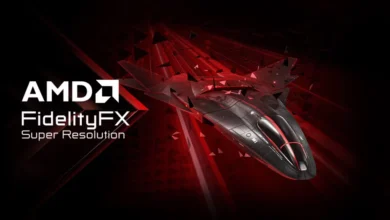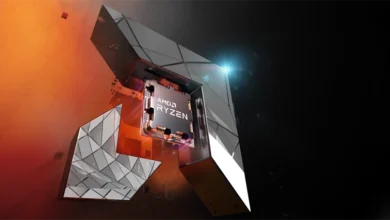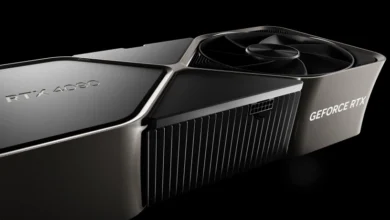AMD Announces Radeon RX 7800 XT & RX 7700 XT Graphics Cards

Both graphics cards will be based on the Navi 32 GPU. The release date is going to be in early September. AMD claims that the RX 7800 XT is faster than the Nvidia RTX 4070 and the RX 7700 XT is faster than the Nvidia RTX 4060 Ti.
AMD announced the Radeon RX 7000 series almost a year ago. In it, the first graphics cards to launch were the Navi 31 GPU based Radeon RX 7900 XTX and RX 7900 XT. The announcement also had them display FSR 3.
Then came the Navi 33 GPU based Radeon RX 7600. So that means AMD had flagship graphics cards and then they had budget graphics cards launched in the RX 7000 series. But what about mid-range cards.
About 20 days ago, AMD released a report stating that the Radeon RX 7800 XT and RX 7700 XT graphics cards are coming soon, in Q3. But we didn’t know their exact date or specs. Now we do.
RX 7800 XT & RX 7700 XT Announced
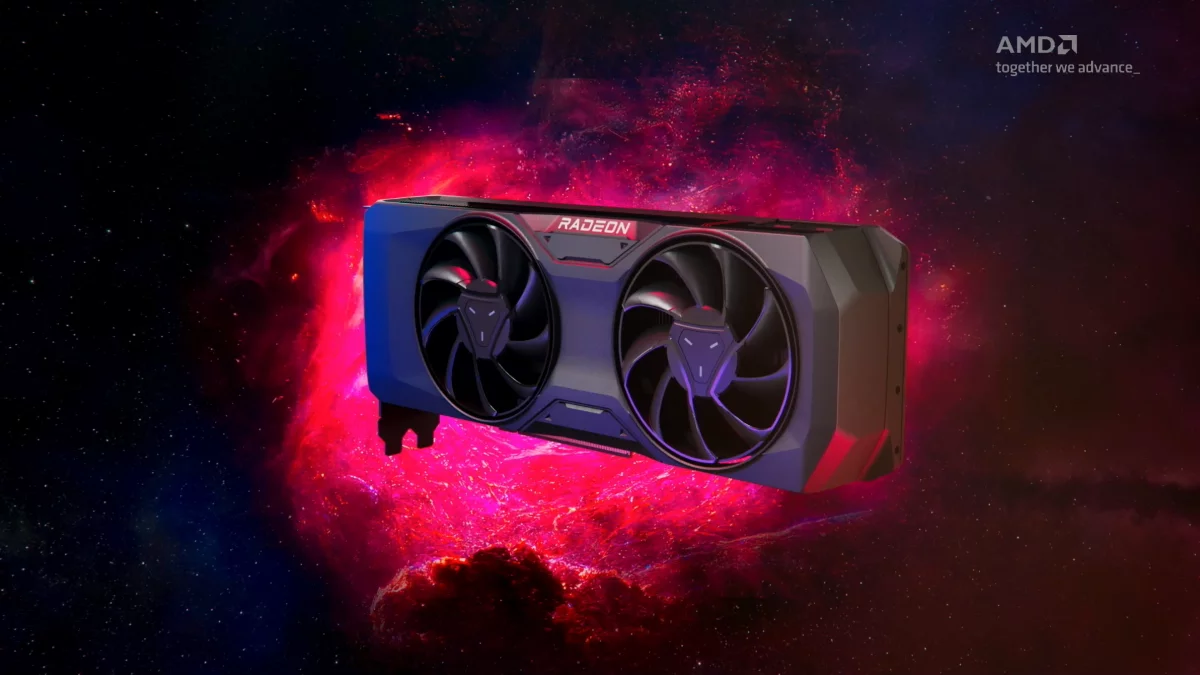
Currently, the Gamescom trade fair is going on. Many games were showcased during the first day of the Gamescom event. In later days, it was expected that AMD would announce the RX 7800 XT and RX 7700 XT graphics cards. Sure, they did.
At Gamescom, AMD announced the RX 7800 XT and RX 7700 XT graphics cards, along with their specs and release date. The video of the announcement can be viewed here. The announcement starts after 4:43:00. Both the graphics cards will use a Navi 32 GPU, with the RX 7800 XT using a full size one and the RX 7700 XT using a cut-down one.
RX 7800 XT & RX 7700 XT Specs
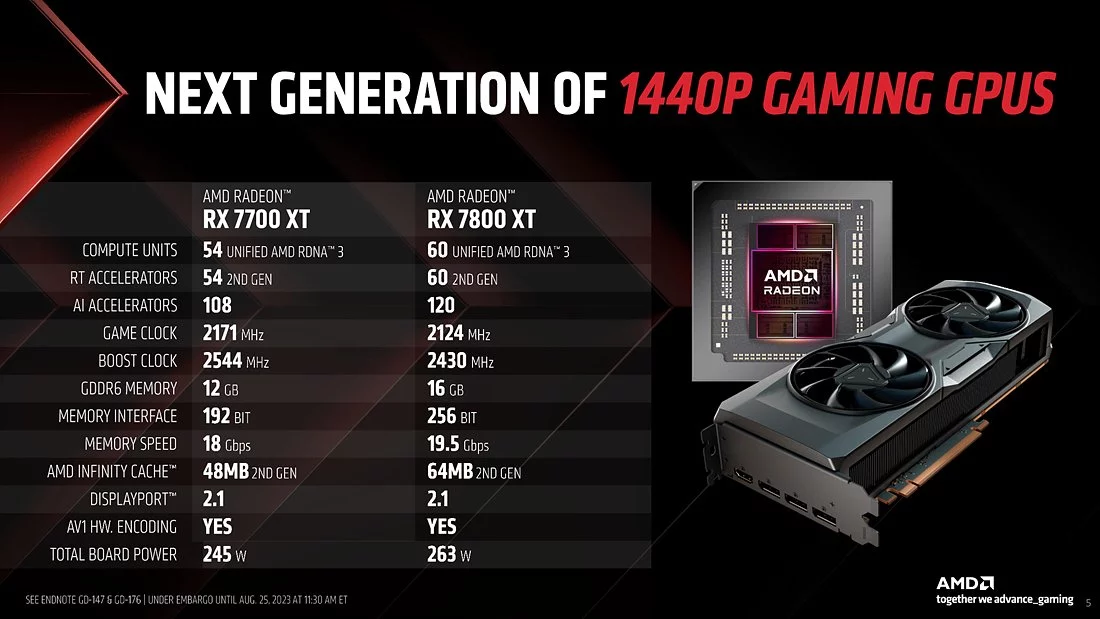
In terms of raw specs, the AMD Radeon RX 7800 XT comes with RDNA 3 based 60 compute units, 60 ray tracing accelerators, a 2140MHz game clock and a 2430MHz boost clock. It will come with 16GB GDRR6 VRAM with a 256-bit bus interface, running at a memory speed of 19.5Gbps and will have 64MB second-generation infinity cache. The RX 7800 will come with a TBP of 263W.
As for the AMD Radeon RX 7700 XT, it will come with RDNA 3 based 54 CUs and RT accelerators, just 6 less than the RX 7800. It will have a game clock of 2171MHz and a boost clock of 2544MHz. The card will come with 12GB GDDR6 VRAM on a 192-bit bus running at a memory speed of 18Gbps and will have 48MB of second-gen infinity cache. The RX 7700 XT will come with a TBP of 245W.
Both graphics cards will support DisplayPort 2.1 and will also support AV1 encoding. Both of them will require 2×8-pin cables to power the cards.
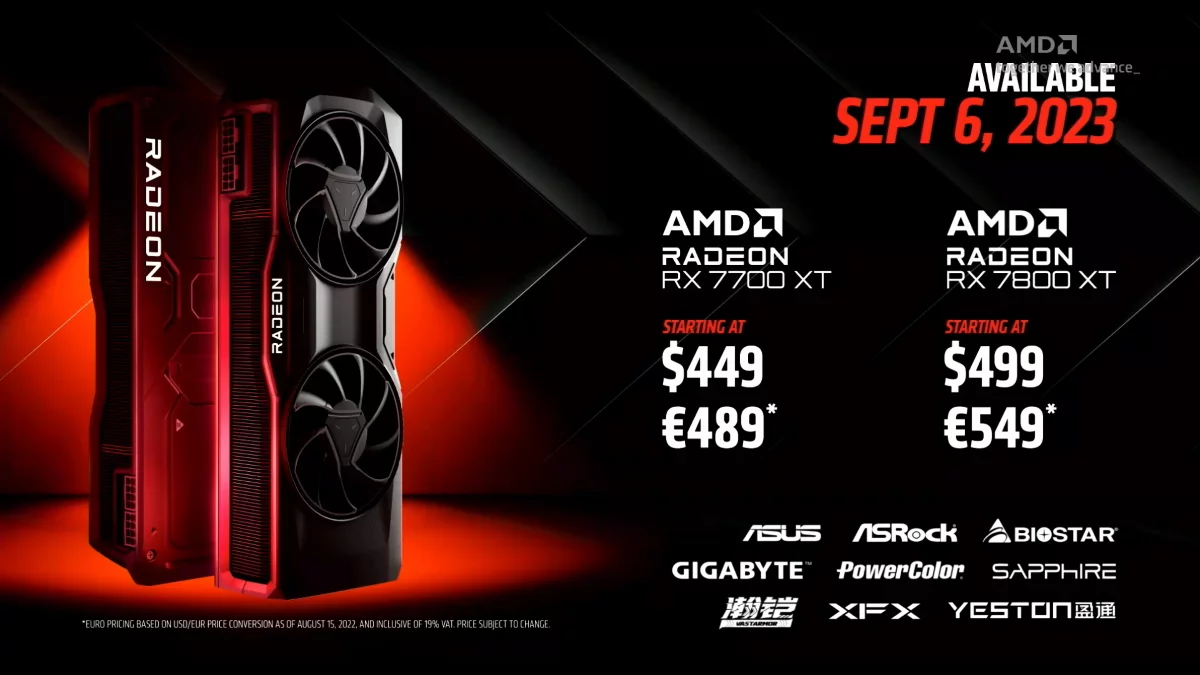
The cost of the AMD Radeon RX 7800 XT will start at $499 / €549. Whereas, the cost of the AMD Radeon RX 7800 XT will start at $449 / €489. The Euro prices are inclusive of taxes.
Both of them are releasing on 6th of September.
RX 7800 XT & RX 7700 XT Performance
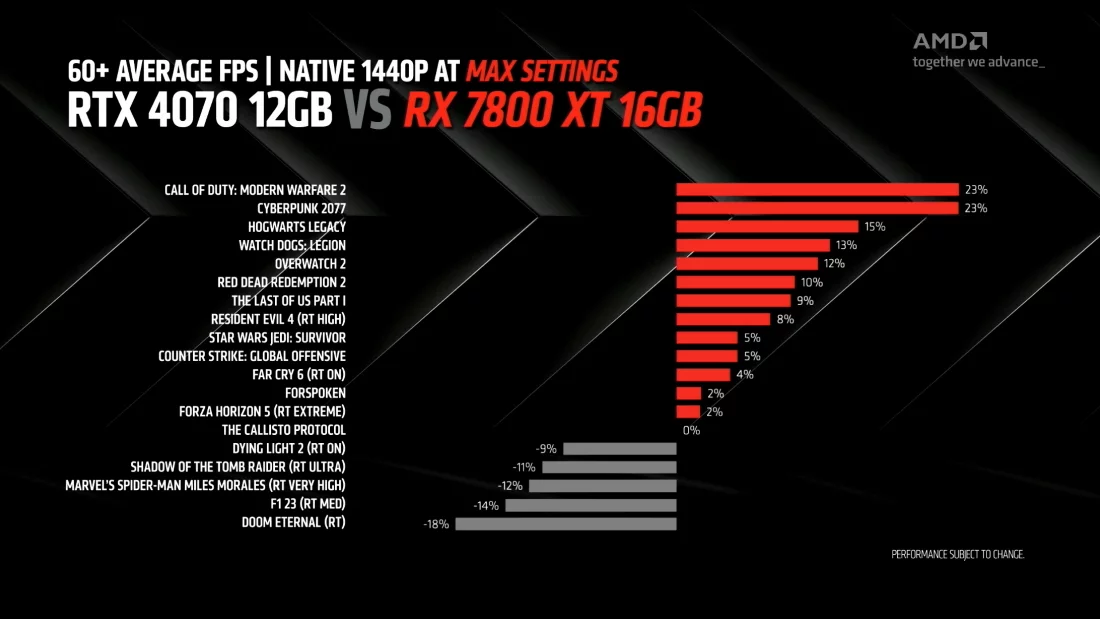
AMD claims that the RX 7800 XT graphics card is faster in several games when compared to the Nvidia GeForce RTX 4070 12GB at native 1440p resolution at max settings.
For the record, the RTX 4070 retails for $599. So, AMD is selling the RX 7800 XT $100 cheaper than its Nvidia rival. Having said that, the performance chart shows how games perform better on the Nvidia RTX 4070 when raytracing is enabled.
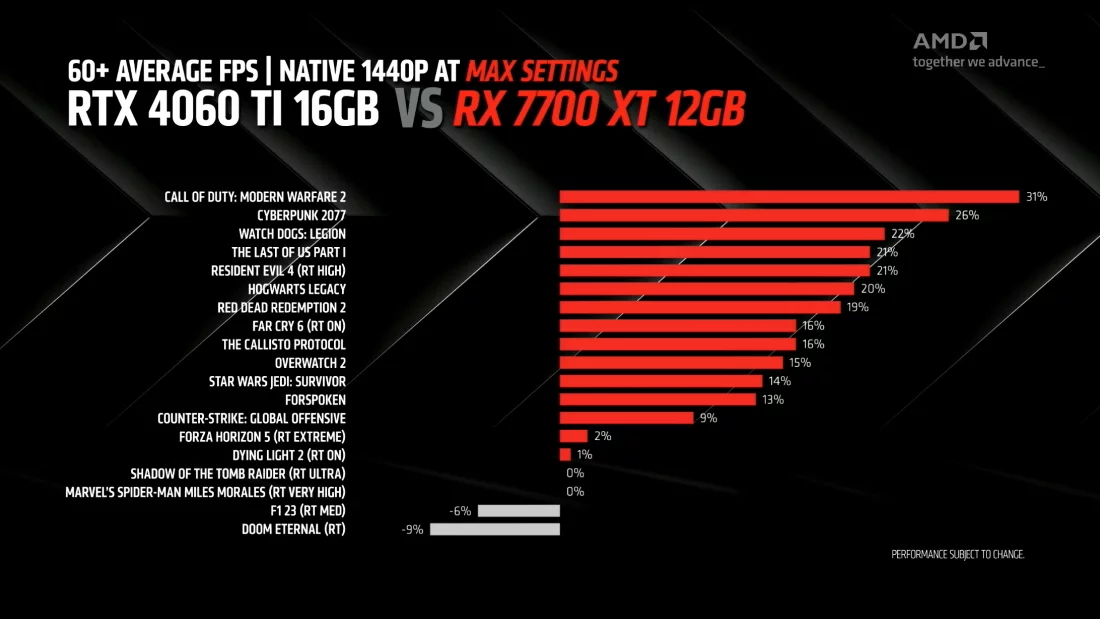
For the RX 7700 XT, AMD claims that the graphics card is faster than the Nvidia GeForce RTX 4060 Ti 16GB, here too at native 1440p resolution at max settings.
The RTX 4060 Ti 16GB retails at $499, so AMD wants to show how the RX 7700 XT is $50 cheaper than it. However, the RTX 4060 Ti 16GB virtually performs the same as the 8GB, which sells for $399 instead, so the RX 7700 XT is, in fact, $50 more expensive than the RTX 4060 Ti 8GB.
But ignoring all that, the RX 7700 XT does seem faster than the RTX 4060 Ti in virtually all games except two.
In must be mentioned that AMD is marketing these cards as 1440p running at 60FPS at native resolution.
AMD FSR 3 Showcased And Release Date Announced
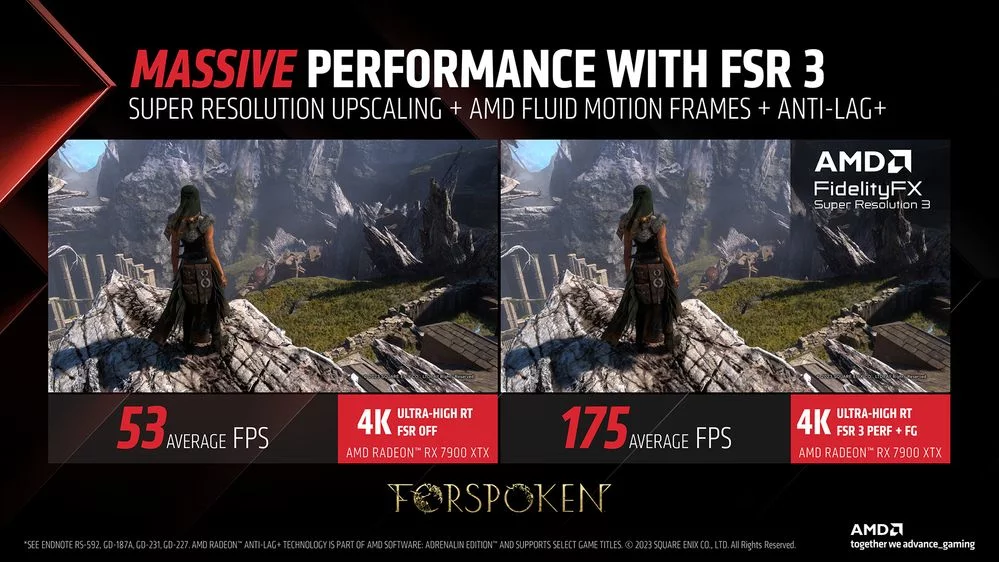
When AMD announced the RX 7000 series, it also announced the AMD FidelityFX Super Resolution 3 upscaler to rival DLSS 3 by Nvidia. However, for months, we didn’t get any update on the release date of FSR 3. Now we have more information about it.
FSR 3 is an upscaler combined with frame generation, which AMD calls AMD Fluid Motion Frames (AFMF). AMD claims that FSR 3 boosts the game by up to 3.3x in performance mode.
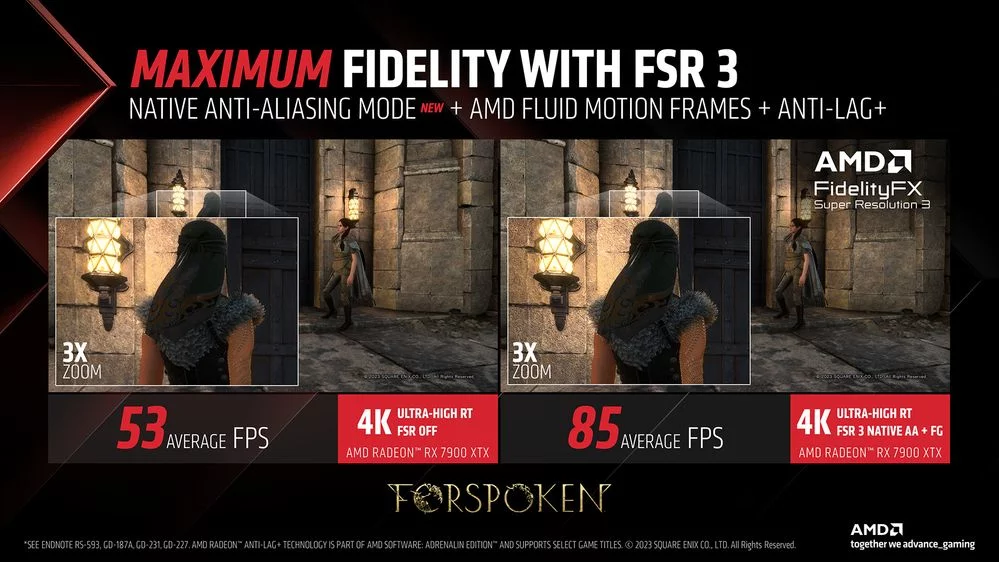
In FSR 3, AMD also introduces Native Anti-Aliasing, which improves the image quality without using any upscaling while still applying high quality anti-aliasing. When combined with frame generations, it can improve the performance further.
AMD also introduced AMD Radeon Anti-Lag+ technology for the RX 7000 series, which claims to reduce the lag further. Something that is an issue with frame generating upscalers.
As for the game support and developers, AMD claims that 15 game developers are on board to support it. Interestingly, AMD claims that AMD Fluid Motion Frames can work on all DirectX 10 and DirectX 11 games at the driver level without the official game support, but that probably does require an AMD dedicated graphics card.
But coming to the graphics card support part, unlike Nvidia’s DLSS 3, which is limited to just Nvidia RTX graphics cards, that too to the RTX 4000 series, AMD reaffirms that FSR 3 will work on all the graphics cards irrespective of the brand. This is because FSR 3 is going to be open source, just like FSR 1 and 2.
As for the release date, AMD says games with FSR 3 support are coming this fall, which means either this quarter or early next quarter.
FSR 3 Requirements
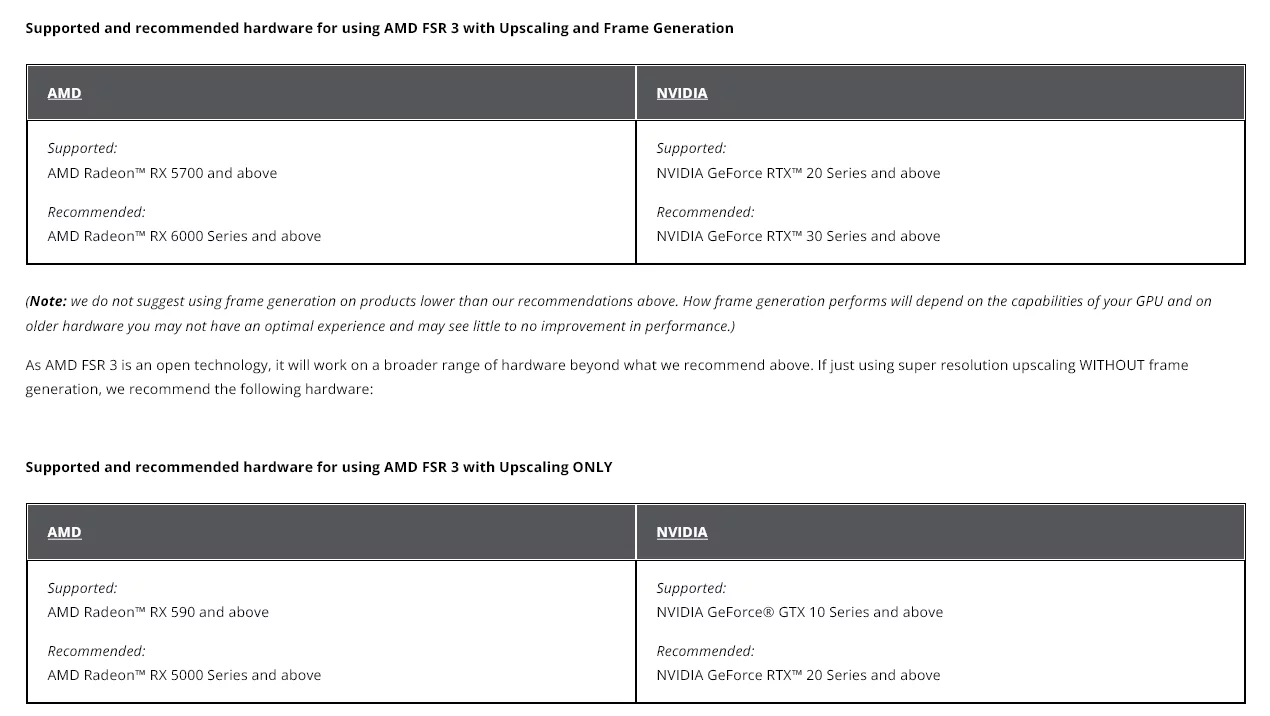
One big caveat, though, is that because FSR 3 requires powerful hardware, AMD has some recommendations for what types of graphics cards should be usable with it.
For FSR 3 with upscaling and frame generation, AMD says a minimum AMD Radeon RX 5700 is required and the AMD Radeon RX 6000 series is recommended. For Nvidia, the recommendation is similar. It suggests the RTX 2000 series as the minimum and recommends the RTX 3000 series.
When using upscaler only, AMD says a minimum AMD Radeon RX 590 is required and recommends the AMD Radeon RX 5000 Series. Same with Nvidia, a minimum GTX 1000 series is required and the RTX 2000 series is recommended.
Why? Because AMD claims that anything more outdated than that might not give any performance improvements.
Conclusion
All these announcements by AMD are excellent. While the AMD Radeon RX 7800 XT graphics card is good, the RX 7700 XT is rather disappointing. For now, however, we will have to wait for their official launch and their benchmarks to be sure.
As with FSR 3, everyone is asking when it will come. AMD admits that it was delayed more than expected. But now it’s coming and it’s coming on a big scale. It will be interesting to see it in action when it comes out in games out there.
